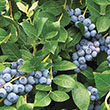You're shopping: DAVIDSONVILLE
(change store)
Departments - CHERRY 'BING'(BLACKYORK) 15GSDWF
CHERRY 'BING'(BLACKYORK) 15GSDWF
no reviews for this product. Login to place a review.
Your Price $80.00
Item Number 281053
In store quantity:
0
$80.00/ EA
Cherry 'Bing'
15-Gallon, Semi-Dwarf
Height: 12-15 feet tall.
Spread: 10-12 feet.
Sunlight: Full sun.
Hardiness Zone: 5a.
Other Names: Prunus avium 'Bing'
Description:
One of the most popular and widely grown sweet cherry varieties, 'Bing' is prized for its large, deep red fruit with exceptional sweetness and firm texture. This semi-dwarf variety produces abundant crops of delicious cherries in early to mid-summer, making it an excellent choice for home orchards. Its vigorous growth, glossy green foliage, and springtime white blossoms add ornamental value to any landscape.
Edible Qualities:
Cherry 'Bing' produces large, dark red cherries with a rich, sweet flavor and firm flesh. The fruit ripens in early to mid-summer and is perfect for fresh eating and culinary use.
The fruit is most often used in the following ways:
- Fresh Eating
- Baking
- Canning
- Jams & Preserves
- Freezing
Features & Attributes:
Cherry 'Bing' showcases lush green foliage throughout the growing season, followed by clusters of fragrant white blossoms in early spring that attract pollinators. Its large, deep red cherries ripen in summer and are among the sweetest varieties available.
This is a deciduous tree with an upright, spreading growth habit. It requires cross-pollination with another sweet cherry variety, such as 'Rainier' or 'Black Tartarian,' for optimal fruit production.
Aside from its primary use as an edible, Cherry 'Bing' is suitable for the following landscape applications:
- Small Orchards
- Home Gardens
- Edible Landscaping
Planting & Growing:
Cherry 'Bing' will grow to be about 12-15 feet tall at maturity, with a spread of 10-12 feet. It has a low canopy with a typical clearance of 3-4 feet from the ground. It grows at a moderate rate and, under ideal conditions, can be expected to live for 30 years or more.
This tree thrives in full sun and well-drained soil. It requires consistent moisture, particularly during fruit development, and benefits from an annual layer of mulch to retain soil moisture and regulate temperature. Pruning in late winter or early spring helps maintain its shape and encourages better fruit production.
Additional Characteristics:
- Early to Mid-Summer Harvest
- Requires Cross-Pollination for Best Yields
- High-Yielding
- Cold Hardy
- Attractive Spring Blossoms
Recently Viewed Products
BLUEBERRY 'DUKE' 5G
$25.00

